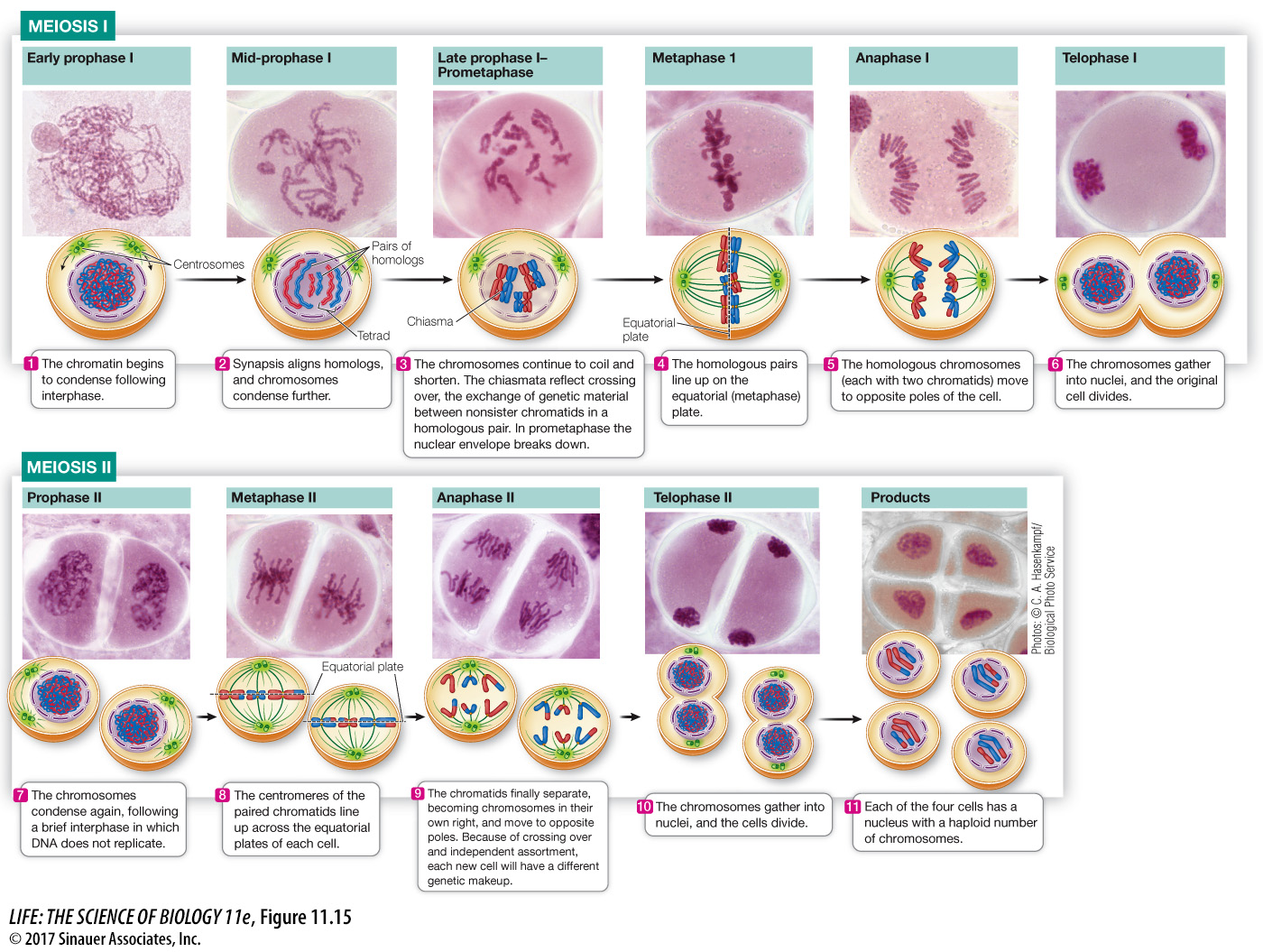Meiosis reduces the chromosome number
Meiosis consists of two nuclear divisions that together reduce the number of chromosomes to the haploid number, in preparation for sexual reproduction. Although the nucleus divides twice during meiosis, the DNA is replicated only once. The events of meiosis are illustrated in Figure 11.15. You should refer to it often as you read about meiosis in detail. Two unique features characterize the first nuclear division, called meiosis I:
Homologous chromosomes come together to pair along their entire lengths. No such pairing occurs in mitosis.
The homologous chromosome pairs separate, but the individual chromosomes, each consisting of two sister chromatids, remain intact. (The chromatids will separate during meiosis II.)

Activity 11.5 Images of Meiosis
Like mitosis, meiosis I is preceded by an interphase with an S phase, during which each chromosome is replicated. As a result, each chromosome consists of two sister chromatids, held together by cohesin proteins. At the end of meiosis I, two nuclei form, each with half of the original chromosomes (one member of each homologous pair). Since the centromeres did not separate, these chromosomes are still composed of two sister chromatids. The sister chromatids are separated during meiosis II, which is not preceded by DNA replication. As a result, the products of meiosis I and II are four cells, each containing the haploid number of chromosomes. But these four cells are not genetically identical.
Animation 11.2 Meiosis
Activity 11.4 Meiosis Simulation